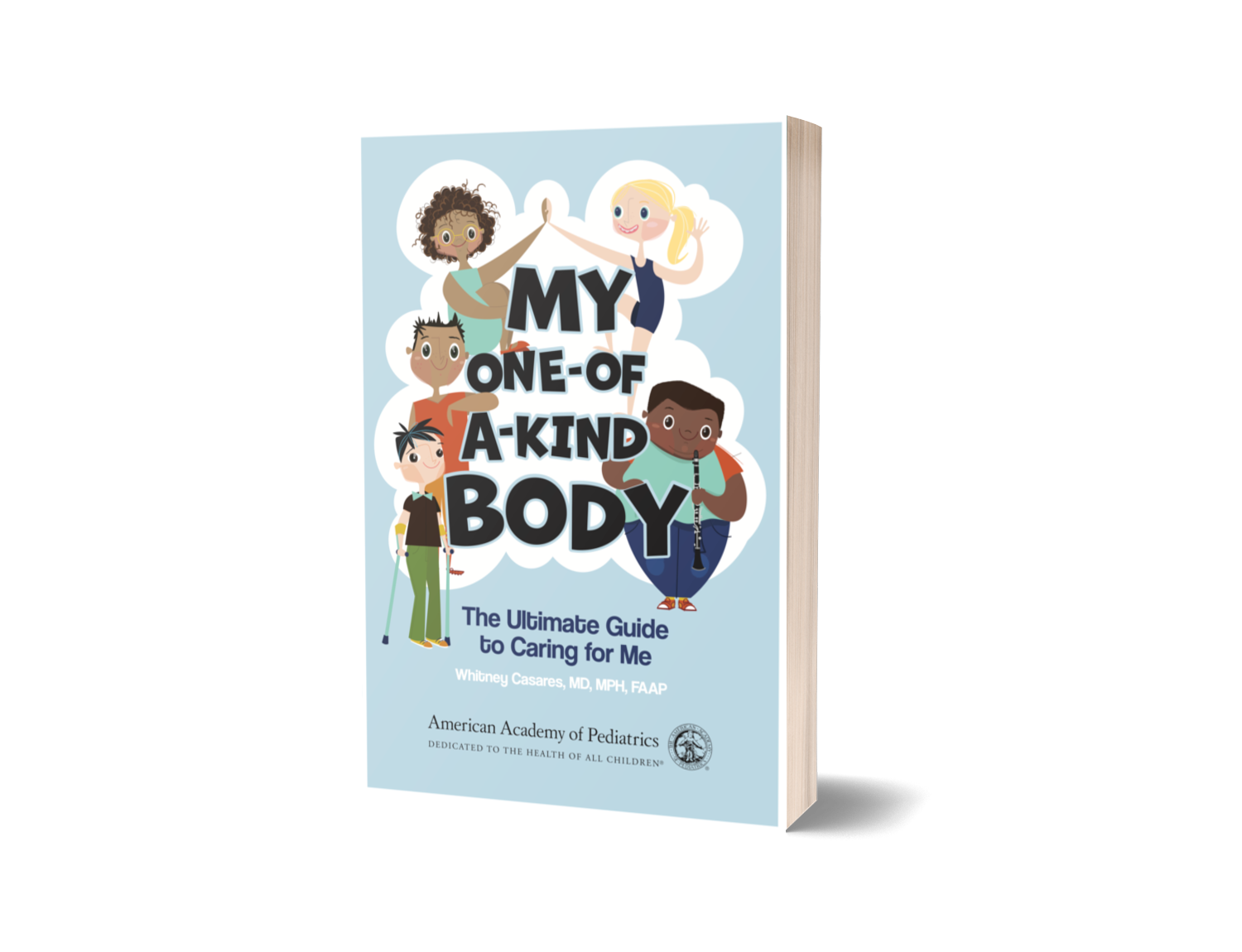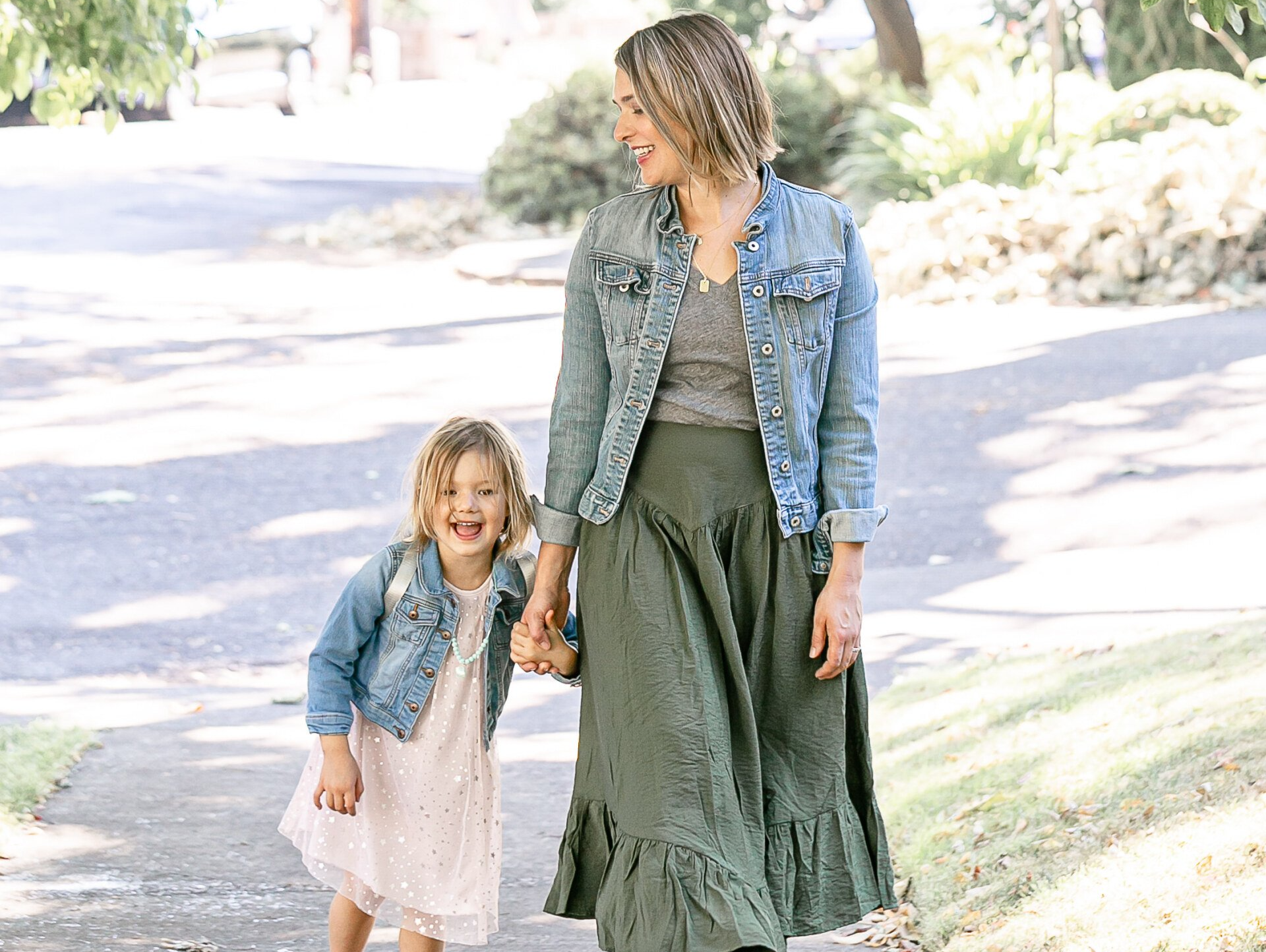This week, I'm sharing a sneak peek from Doing it All: Stop Over-Functioning and Become the Mom and Person You're Meant to Be, Chapter 1.
"When my daughters were still young, Portland endured one of the coldest Januarys on record. That year, my family spent way too much time huddled inside our two-story bungalow, staring at its imperfections and feeling cramped. The longer we struggled through “snowmaggedon,” the more and more house listings my husband Scott texted me. I wasn’t surprised—he’d been wanting to sell our fixer-upper and upgrade to a home with more square footage and a better kitchen for two years.
“We’d be happier with more room and fewer creaky doors,” he told me.
I didn’t necessarily disagree. When we bought our first home, in the peak of the 2008 recession, we had the real estate wherewithal of one-year-olds. It was in a good neighborhood, but it was the tiniest excuse for a dwelling place on the block. When we first moved in, we recruited all our friends to paint over the 1980s pastel stenciling in the kitchen and living room and respackle a textured gold wall in the nursery. We eventually upgraded the plumbing, bathrooms, heating, and roof and even refinished the basement, trying to create more nooks and crannies for our kids to escape to on rainy Pacific Northwest days. By the time that snowy January blew in, that pig had just about all the lipstick it could take. I started thinking that maybe we had outgrown it. Maybe it was time to move on—you know, from a practical standpoint.
But I got stuck on the word happier. While Scott showed me dream properties with new roofs, new appliances—a porch even!—it sparked a different yearning in me. Yes, more space would be nice, but even as Scott detailed all the reasons we should relocate, I realized that more space wouldn’t fix what we were really yearning for: a life with less clutter, more calm, and more satisfaction. Those were things that we could have here, in this tiny house, in this life we were living right at that moment. It wasn’t the space and the new appliances he was craving. He was searching for a better existence. I was, too.
If I’m being honest, for a long time, I thought that a better existence meant more than just happiness. It meant perfection. I believed Oprah when she told me The Secret was the answer to all of life’s quandaries—that if I just had enough positive energy, I would attract only positive things in my life, and that I could use the power of positive thinking to achieve anything I imagined. I built vision boards and manifested a blessed life, just like the most renowned self-help speakers told me to. But it never worked because—and this is going to be hard for some of you to hear—life doesn’t actually work that way. Here in reality, life is full of circumstances we can’t control, even if we want to, and sometimes, it throws us curveballs. I learned that in the earliest stages of motherhood with Makena. And, while at first that left me jaded (and downright irritated) with the manifesters, eventually it inspired me to find a way to make vision boards and self-belief work here in the real world.
The trick I discovered was to tweak my manifestation energies away from focusing on concrete statements about what I would achieve, toward intentions about how I would act or who I would be. It was to create a set of goals for my life that didn’t depend on the stars aligning or me attracting the right energy, but rather on me staying true to my values and priorities. I didn’t actually want more money. I wanted to be satisfied. I didn’t need more things. I needed more meaning. A dress size 2 was not the answer. Physical and mental energy were. I wasn’t looking for life to be flaw- less. I was looking for it to be purposeful. How would I know I’d found what I was searching for? I’d know because I would have meaning and fulfillment, not because of my material means or circumstances, but in spite of them.
I started reading scientific literature about cognitive behavioral therapy principles like radical acceptance and listening to academic thought leaders who specialized in goal setting. I learned from experts about using visualization to understand my core values and priorities. Then, I used the idea of a traditional vision board, coupled with the insights I gained from my research, to use my refined visualization techniques to define a life—a real life, not a fantasy life—where I was the mother, partner, professional, and person I’d always wanted to be. I named this vision of a purposeful, aligned life the Centered Vision, and it became the foundation of the Centered Life Blueprint.
Developing my Centered Vision didn’t make me a millionaire, but it did give me this:
- Abundance instead of overwhelm
- Alignment instead of confusion
- Clarity instead of inner conflict
- Energy instead of exhaustion
- Excitement about the life I lead instead of dread to start the day
- Purpose instead of distraction
- Peace instead of resentment
What Is the Centered Vision?
Your Centered Vision is what your life would look like if all your values and priorities played out in your life—if what was really important to you aligned with what your life actually looked like. Practically speaking, it’s a visual image—a detailed, inspired snapshot—that represents your aligned, purposeful life. One that, by the end of this chapter, you’ll be able to call up at will, whenever you need a reminder of what’s really important.
To develop your Centered Vision, you need to get honest about what your life could look like if you were at your best, doing what really filled you up, in a life that you love. It’s not about manifesting your way to a full-time personal chef, no-limit credit card, and permanent vacation status—that’s a fantasy. Instead, it’s about imagining a life where you’re deeply connected to yourself and to what gives you meaning and purpose.
Here’s what my Centered Vision looks like:
I’m sitting on a sunlit balcony, again with those cheap Target curtains framing my view. I look out onto a vast, expansive ocean. It stretches to the horizon, an endless sea of possibility. The waves are calm and still. The water laps gently onto the beach below me, almost silent as it lands on the shore. Makena and Mireia leap and jump to an inaudible soundtrack, dancing in the white foam together, then apart, and then together again. They fall and pick themselves up. They suddenly turn and sprint toward me, crashing into my arms. I scoop them up, and we spin around. In a flash, they wave, turn, and revisit their make-believe theater performance down on the sand, just as happy to play on their own as they are to dance with me.
I have a massive mug of coffee in my hands that somehow never gets cold, even though it’s breezy enough to make me wrap a lush, fuzzy blanket around myself to ward off the chill of the morning. I’m focused. I don’t need the caffeine to wake me up today. I drink it for the ritual—it’s keeping me company—a warm, comfy friend. I don’t need to go anywhere or do anything else today. I’m not hungry or tired or worried. A pen and paper sit on the table before me. On my right and my left are women who link arms with me. We are talking together, our foreheads touching, then rising, and then touching again. They form a chain that extends as far as I can see in either direction down the sand (I’m not sure how this works with the whole balcony thing from a physics perspective, but, hey, it’s a make-believe vision, so just go with it, okay?). I experience health, attachment, purpose, connection, and joy—pure, unadulterated joy.
My Centered Vision represents my values and priorities: strong family connection (Makena and Mireia); impactful contribution to other women (our linked arms); physical and mental wellness (my warm cup of coffee); exploration and adventure (the vast ocean); and financial wellness (the cozy and secure blanket).
These values and priorities reveal the tangible places where I want to invest most of my time and physical and mental energy. They are the components that make my imperfect, stressful life whole—that give it meaning, substance, and structure, no matter what’s going on in the moment and no matter what I accomplish (be it a fully-checked grocery shopping list or getting to the C-suite). These are the areas that matter most to me—that energize me and that bring me or allow me to have the most joy. It’s not a manifestation or a fantasy wish list. It’s not a two-hour work day or a spot on America’s Got Talent. It’s the values I care most deeply about in combination with the activities that bring me the most joy. They are the pillars that center me. It’s what I really, really want. Let’s find what you want, too."
Your Next Steps
Want to read more? Check out
Doing it All: Stop Over-Functioning and Become the Mom and Person You're Meant to Be in paperback, eBook, and audiobook.












